Latvijos šauliai Pirmajame pasauliniame kare I WW1
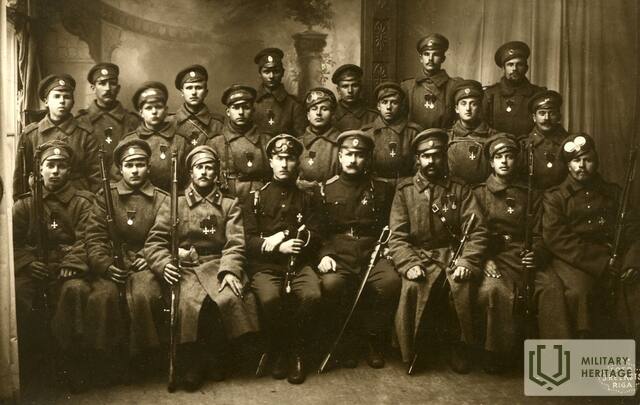
Pirmasis pasaulinis karas buvo lūžio taškas Europos istorijoje, taip pat ir Latvijos istorijoje. Jau 1915 m. karas siautėjo visoje Europoje, o tų metų vasarą prasidėjo didvyriškų Latvijos šaulių istorija. Tūkstančiai savanorių Latvijoje įstojo į kariuomenę ir įkūrė savo nacionalinius dalinius. Tūkstančiai vyrų savanoriškai stojo į kovą su priešu petys į petį kartu su savo tautiečiais.
1915 metų pavasarį vokiečių kariuomenė įsiveržė į Latvijos teritoriją, o po beveik pusmečio trukusių karo veiksmų rudenį frontas stabilizavosi, padalijęs Latviją į dvi dalis. Lemtingoji Dauguvos upė tapo fronto linija ir simboline siena, kurios pakrantėse daugelis žmonių paliko savo namus ir artimuosius. Latvijos šaulių didvyriški protėviai buvo du jungtiniai Daugavgryvos tvirtovės darbo batalionai, kovoję sunkius mūšius su įsiveržusiais vokiečiais.
Iki 1915 m. pavasario Rusijos karinė valdžia gavo keletą pasiūlymų įkurti Latvijos nacionalinius karinius dalinius. Tačiau jie visi buvo atmesti. Po sėkmingų Daugavgryvos tvirtovės sargybos batalionų mūšių netoli Jelgavos 1915 m. gegužės pradžioje vėl iškilo mintis apie Latvijos karinių junginių poreikį. Tai propagavo vienas žymiausių to meto Latvijos politikų – Rusijos Valstybės Dūmos deputatas Janis Goldmanis. Siekdamas aptarti šią idėją ir jos įgyvendinimo galimybes, 1915 m. birželio 1 d. jis pakvietė žymius Latvijos inteligentijos, karinių ir ekonominių sluoksnių atstovus į slaptą susitikimą.
Katastrofiška Rusijos armijos būklė 1915 m. vasarą buvo vienas iš svarbiausių veiksnių, lėmusių palankų sprendimą formuoti Latvijos dalinius, žadant latvių vadovavimo kalbą, latviškus užrašus ant kovos vėliavų ir specialius krūtinės šarvus. Taip pat išliko vilčių dėl politinių reformų po karo pabaigos – platesnės vietos valdžios įvedimo Latvijoje, administracinės reformos ir kultūrinės autonomijos.
1915 m. rugpjūčio 10 d. laikraštis „Dzimtenes Vēstnesis“ išspausdino rašytojų Ato Ķeninio ir Kārlio Skalbės parašytą, Rusijos Valstybės Dūmos deputatų Jānio Goldmanio ir Jānio Zālīčio pasirašytą kreipimąsi „Susirinkite po Latvijos vėliavomis“, kuriuo 17–35 metų savanoriai buvo raginami stoti į Latvijos batalionus ir ginti savo tėvynę nuo vokiečių užpuolikų.
Pirmosiomis dienomis atvyko tiek daug vyrų, kad organizaciniai komitetai dirbo net naktį. Tarp savanorių buvo daug jaunų vyrų, kurie nebuvo patyrę nei karo, nei tarnybos, tačiau jų entuziazmas nešė ir vyresnius vyrus, kurie žinojo, kur eina. Iš viso paraiškas pateikė apie 8000 savanorių, o per visą Pirmąjį pasaulinį karą Latvijos šaulių batalionuose buvo iki 25 000 vyrų. Iki 1916 m. Latvijos šauliai buvo sujungti į Daugavgryvos batalioną, Rygos, Kuržemės, Vidžemės, Žiemgalos, Tukumo, Bauskės, Valmieros ir rezervinį batalionus, kurie vėlesniais karo metais buvo pervadinti į pulkus.
Latvijos šaulių batalionai į pirmuosius mūšius stojo 1915 m. spalį, kad sustabdytų vokiečių puolimą netoli Rygos. 1916 m. vasarą ir rudenį šauliai kovojo Mirties saloje, 1917 m. sausį Tyreļpurvoje prie Ložmetējkalno įvyko Jelgavos operacija, arba Kalėdų mūšis, kuriame šauliai neteko trečdalio savo bendražygių, o 1917 m. rudenį jie atlaikė vokiečių pranašumą mūšiuose prie Mazā Juglos.
Pasibaigus Pirmajam pasauliniam karui, dalis Latvijos šaulių liko Rusijoje ir kovojo Pilietiniame kare įvairiuose frontuose, kiti dalyvavo Latvijos nepriklausomybės kare. 1920 m., atėjus taikos metui, į Latviją grįžo daug buvusių šaulių, kurie pastaruosius penkerius metus praleido kovodami.
Iš maždaug 3000 iki 1917 m. žuvusių Latvijos šaulių 870 palaidoti Rygos brolių kapinėse. Likę dėl įvairių priežasčių negalėjo būti pervežti į Rygą, todėl Latvijos kareivių palaidojimų galima rasti Slokoje, Kemeryje, Tīnūžiuose, Kekavoje ir kitur.
Greta Pirmojo pasaulinio karo įvykių Latvijoje iš tikrųjų vyko ir kita kova – kova už latvių pasitikėjimą savimi, o tuo metu iš šaulių kovinės dvasios gimė ir viltis sukurti savo valstybę.
Daugiau informacijos šaltinių
1. Dokumentinis filmas „Po Latvijos vėliavomis. Didvyrių gimimas“, 2015 m. Prieinama: https://www.youtube.com/watch?v=GmZV74r6EbI [žiūrėta: 2021-05-04.].
2. Sielų pūga. Skaitmeninis muziejus. Prieinama: https://www.dveseluputenis.lv/lv/laika-skala/notikums/67/latviesu-inteligence-nolemj-dibinat-strelnieku-vienibas/ [žiūrėta: 2021-05-05.].
3. Zariņš K. „Pirmasis pasaulinis karas Latvijoje ir Latvijos šaulių mūšiai“, 2015. Prieinama: https://www.sargs.lv/lv/pirmais-pasaules-kars/2015-07-15/pirmais-pasaules-kars-latvija-un-latviesu-strelnieku-cinas [žiūrėta: 2021-05-05.].
Jūsų komentarai
Susijusi laiko juosta
Susijusios vietos
Kalėdų mūšių muziejus
Muziejus, įsikūręs sodyboje „Mangaļi“ Jelgavos apylinkėse, Valgundės seniūnijoje, yra Latvijos karo muziejaus filialas. Jis atidarytas 2005 m. toje vietoje, kurioje per Pirmąjį pasaulinį karą vyko Kalėdų mūšiai. Šiose vietose iki šiol tebėra išlikę išskirtiniai Pirmojo pasaulinio karo įtvirtinimai. Kalėdų mūšių muziejaus ekspozicija yra įrengta autentiškoje vietoje po atviru dangumi. Čia galima pamatyti rekonstruotą įtvirtinimų sistemos fragmentą – lauko slėptuvę ir dalį pirmosios vokiečių gynybos linijos, vadinamos „vokiečių pyli mu“. Tai vienintelis tokio pobūdžio objektas Baltijos šalyse. Kalėdų mūšiai – vienas žinomiausių ir dramatiškiausių Pirmojo pasaulinio karo įvykių Latvijoje. Jie užima ypatingą vietą latvių karo ir kultūros istorijoje. Intensyvūs mūšiai truko šešias dienos ir pareikalavo daug aukų. Šie įvykiai dažniausiai siejami su latvių šaulių puolimu prieš Vokietijos kariuomenę, vykusiu ypač atšiauriomis ir nepalankiomis žiemos sąlygomis. Tai buvo pirmas kartas, kai didelio masto puolimas vyko be artilerijos palaikymo.
Šiuo metu muziejuje eksponuojami mūšių vietose rasti radiniai. Vidaus ekspozicija lankoma nustatytu laiku, o po atviru dangumi esančių įtvirtinimų ekspoziciją galima apžiūrėti kiekvieną dieną. Apylinkėse sudaryti turistiniai maršrutai ir įrengti pažintiniai takai.
Upės slėnio tranšėja
Maršruto pradinis taškas yra Upeslejų centre, netoli autobusų stotelės.
1917 m. rugsėjo 1 d. rytą, po tris valandas trukusios artilerijos ugnies, vokiečiai pradėjo statyti tris medinius pontoninius tiltus per Dauguvą netoli Ikškilės. Iš 1159 pabūklų ir minosvaidžių buvo paleista apie 560 000 sviedinių, kurie visiškai numalšino 66 rusų pabūklus ir privertė trauktis 186-ąją diviziją, dislokuotą dešiniajame Dauguvos krante. Rusijos 12-osios armijos vadas generolas Parskis įsakė 43-iajam korpusui pradėti kontrataką pralaužus gynybos liniją ir perdavė korpuso vado žinioje 33-iąją, 136-ąją, 138-ąją divizijas, vieną 116-osios divizijos brigadą ir 2-ąją Latvijos šaulių brigadą.
Rugsėjo 1-osios popietę Latvijos šauliai gavo įsakymą žygiuoti į kovą su vokiečiais, kertančiai Dauguvą. 2-oji Latvijos šaulių brigada iš Ropažių išskubėjo pasitikti puolančių vokiečių dalinių, o 5-ojo Žiemgalos Latvijos šaulių pulko kariai apie 16 valandą pasiekė įtvirtintas pozicijas dešiniajame Mazos Juglos upės krante. Po artilerijos ugnies rugsėjo 2-osios vidurdienį prasidėjo puolimas prieš Latvijos šaulių pozicijas. Gynybiniai mūšiai vyko 14 km ilgio fronte dešiniajame Mazos Juglos krante. 2-osios Latvijos šaulių brigados kariai, turėdami kelis pabūklus, susidūrė su kiekybiškai ir techniškai stipresne vokiečių kariuomenės grupe, kuri puolime taip pat naudojo aviaciją, liepsnosvaidžius ir nuodais užnuodytus patrankų sviedinius. Šauliai didvyriškai išlaikė frontą 26 valandas iki rugsėjo 3 d. Atlikę savo užduotį, išgyvenę Latvijos kariai 12-osios armijos vadovybės įsakymu atsitraukė į Siguldos ir Cėsių pozicijas. Nuostoliai buvo labai dideli – daugiau nei pusė 5-ojo Zemgalės ir 6-ojo Tukumo latvių šaulių pulkų kovotojų buvo sutriuškinti, o 7-asis Bauskės ir 8-asis Valmieros latvių šaulių pulkai nukentėjo mažiau.
Kultūros paveldo centras „Tīnūžų dvaras“
Kultūros paveldo centras „Tīnūžių dvaras“ yra Ogrės savivaldybėje, Tīnūžių kaime, 7 km nuo Ogrės ir Ikškilės miestų. Pirmieji rašytiniai duomenys apie dvarą siekia XVI a. Iki XVIII a. vidurio jis buvo laikomas ekonominiu gamybos vienetu su mažais ir nereikšmingais pastatais. Tačiau laikui bėgant jis išaugo į didelį ūkį. Pirmojo pasaulinio karo metu čia vyko Rusijos ir Vokietijos armijų mūšiai, kuriuose dalyvavo ir Latvijos šauliai. Nepriklausomybės karo metu Tīnūžių dvaras buvo naudojamas kaip Latvijos armijos 1-ojo Valmieros pėstininkų pulko štabas ir šarvuočių aikštelė. 1932 m. dvaras buvo perduotas Latvijos karo invalidų sąjungai, kuri apgyvendino ir rūpinosi karo veteranais. Antrojo pasaulinio karo metu (1943 m.) iš Estijos į Tīnūžių dvarą buvo perkeltas Vokietijos armijos dalinys FAT 212. Tai buvo diversantų dalinys, rengęs karius kovai su Raudonąja armija. Latvijos kareiviai taip pat buvo apmokyti žvalgybos rinkimo, partizaninio karo taktikos ir sabotažo menų. Tīnūžių dvaro pono rūmai buvo sugriauti, kai Raudonoji armija judėjo Rygos link. Šiandien tai vieta su nuostabiu kraštovaizdžiu ir istoriniais pastatais Mažosios Juglos upės pakrantėje. Kultūros paveldo centre „Tīnūžių dvaras“ galima pamatyti ekspozicijas, skirtas istoriniams įvykiams, įskaitant ir tas, kurios susijusios su Latvijos šauliais.
Paminklas Mažosios Juglos mūšiui Tīnūžuose
Įsikūręs Tīnūžių kaime, Ikškilės savivaldybėje, pakelėje, netoli Tīnūžių pradinės mokyklos.
Paminklas Latvijos šauliams, kovojusiems prieš Vokietijos armiją Pirmojo pasaulinio karo metu. Mažosios Juglos upės mūšis 1917 m. rugsėjo 1–2 d. buvo Rygos operacijos kulminacija. Vokietijos armija pradėjo puolimą prieš Ikškilę, siekdama užimti Rygą ir sučiupti Rusijos 12-ąją armiją. Vokiečių armijos daliniai, perėję Dauguvą pontoniniais tiltais, pasiekė Mažosios Juglos upės apylinkes, kur juos užblokavo Latvijos šauliai. Jiems buvo įsakyta sulaikyti priešą, kol visa Rusijos 12-oji armija ištrūks iš apsupties, nepatekdama į Vokietijos armijos sugavimą. Kovos vyko su dideliais abiejų kariaujančių pusių nuostoliais.
Šiandien galite aplankyti 2005 m. atidengtą skulptoriaus Janio Karlovo paminklą „Didvyrių altorius“, skirtą Latvijos kovotojams. Už 300 metrų yra Tīnūžių dvaras, kuriame įrengta ekspozicija.
Kulkosvaidžio kalnas Tyrelio pelkėje
Kulkosvaidžio kalnas (Ložmetėjkalnas) yra Jelgavos apylinkėse, Valgundės seniūnijoje, šalia automagistralės A9. Tai Pirmojo pasaulinio karo mūšių vieta ir vienintelis valstybinės reikšmės kultūrinis ir istorinis draustinis Latvijoje. Ložmetėjkalnas yra ant Ilgosios kopos, priklausančios Nordekių–Kalnciemo kopagūbriui. Pavadinimas atsirado tais laikais, kai čia buvo įrengti neįveikiami Vokietijos kariuomenės įtvirtinimai, ginami sunkiaisiais kulkosvaidžiais.
Kalėdų mūšiai – vienas žinomiausių ir dramatiškiausių Pirmojo pasaulinio karo įvykių Latvijos istorijoje. 1917 m. Ložmetėjkalną puolė ir užėmė Rusijos kariuomenės latvių šaulių bei sibiriečių daliniai. Jie paėmė į nelaisvę apie 600 priešo karių ir užgrobė vertingų trofėjų. Patys šauliai tvirtino, kad būtent jie nusipelnė vadintis šios aukštumos užkariautojais.
Kulkosvaidžio kalno (Ložmetėjkalno) apylinkėse yra išlikę atminimo ženklai ir kitų čia vykusių mūšių liudijimai. Kasmet sausio mėnesį čia vyksta renginiai, skirti Kalėdų mūšių atminimui. Ši vieta tapo latvių šaulių didvyriškumo ir narsos simboliu. Čia pastatytas 27 m aukščio apžvalgos bokštas, nuo kurio atsiveria Kalėdų mūšių vietos vaizdas.
Kalėdinių mūšių memorialas Antinu brolių kapinėse
Įsikūręs Babytės rajone, pakelėje, netoli buvusių Antinių namų ir senojo vaistų sandėlio.
Antinių arba Tyrelių karių kapinės buvo įkurtos Pirmojo pasaulinio karo metu. Šioje teritorijoje buvo Rusijos imperijos armijos gynybinės pozicijos. 1917 m., per Kalėdų mūšius, netoliese buvo įsikūręs 5-ojo Žemgalės latvių šaulių pulko štabas, ligoninė su vaistų sandėliu.
1917 m., sausio 5-osios ir 6-osios naktį, apšviečiant aštuoniems didžiuliams laužams, su karine pagarba buvo palaidoti 105 5-ojo žiemgalių latvių šaulių pulko kovotojai. Jie žuvo mūšiuose su vokiečių armija arba mirė nuo žaizdų. Laidojimo ceremonijai vadovavo pulko vadas Jukumas Vācietis. Vėlesniais metais kapinėse buvo laidojami ir kitų Rusijos armijos dalinių kareiviai. 1925 m. kapinėse atidengtas architekto Eiženo Laubės sukurtas paminklas, o teritorija apželdinta. Informacijos apie 3800 kapinėse palaidotų kareivių aptinkama daug kur, tačiau ją reikėtų laikyti mažai tikėtina ir nepatikrinta.
Antrasis paminklas pirmosios nepriklausomos Latvijos kariams Marupėje
Įsikūręs Marupės savivaldybėje, priešais golfo klubo „Viesturi“ pastatą, miško kelyje, priešais nuorodą į golfo aikštyną.
Projekto idėjos autoriai – Mārupės krašto gidas Miķelis Jakunovas ir žemės sklypo „Dumpmaļi“ savininkas Visvaldis Dumpis.
2014 m. lapkritį, per Latvijos patriotų savaitę, skirtą pagerbti Latvijos karius, miške netoli Dzilnupytės, Marupe ir Babytės apskričių pasienyje, dar viename Pirmojo pasaulinio karo mūšio lauke, buvo atidengtas antrasis paminklas Latvijos kariams. Paminklo idėjos autorius ir finansuotojas yra Visvaldis Dumpis, o jį sukūrė skulptorius Ivaras Feldbergsas. Atminimo vietos savininkas Visvaldis Dumpis norėtų, kad žmonės čia rinktųsi ne tik birželio 14 ir kovo 25 dienomis, bet ir liepos 10 d., minint krašto apsaugos pajėgų įkūrimo metines, bei kitais latviams svarbiais istoriniais įvykiais.
2018 m. lapkričio 9 d. prie paminklo atidarytas informacinis stendas apie vietovės istoriją ir lankytinus objektus. Jis skirtas vietovės istorijai, pasakojant apie kadaise buvusius namus „Adieņi“ ir juose gyvenusią Ķurbjų šeimą, Pirmojo pasaulinio karo įvykius apylinkėse, taip pat apie istorinius objektus, kurių gamtoje nebeįmanoma pamatyti – Dūčių tiltą, Dzirnavų tvenkinį ir malūną bei Medžioklės pirtį.
Buvęs Latvijos kareivių medicinos sandėlis
Įsikūręs Babytės rajone, netoli Antinių karių kapinių ir atnaujintų apkasų.
Pirmojo pasaulinio karo metu nuo 1915 m. šioje teritorijoje buvo įsikūrusios Rusijos imperijos armijos gynybinės pozicijos. 1917 m., per Kalėdų mūšius, šalia Antinių namo buvo įsikūręs 5-ojo Žiemgalos latvių šaulių pulko štabas ir ligoninė su vaistų sandėliu, kuriai vadovavo žymus Latvijos karo gydytojas Pēteris Snīķeris.
Kalėdinių mūšių metu Latvijos šauliai puolė Vokietijos armijos dalinius ypač atšiauriomis ir nepalankiomis sąlygomis. Mūšiuose patirti sužalojimai buvo įvairūs – šautinės žaizdos, sumušimai ir traumos, taip pat nušalimai. Laiku reikėjo suteikti medicininę pagalbą tūkstančiams Latvijos kareivių. Ji buvo organizuojama taip, kad sužeistieji kuo greičiau gautų pagalbą. Mūšio lauke dirbo neginkluoti paramedikai, teikdami pirmąją pagalbą ir išveždami sužeistuosius iš pavojingų vietų. Šalia mūšio laukų buvo įrengti tvarstymo punktai, kur buvo tęsiama priežiūra ir atliekamas triažas. Sunkiau sužeisti kareiviai vežimais ir automobiliais buvo evakuojami į ligonines ar ligonines. Šalia ligoninių buvo įkurtos kapinės, kuriose buvo laidojami nuo sužalojimų mirę asmenys.
Šiandien galite aplankyti senąjį vaistų sandėlį. Netoliese yra Antinių karių kapinės, taip pat rekonstruoti Pirmojo pasaulinio karo apkasai ir slėptuvės. Aplinka tinkama pasivaikščiojimams miške, atskleidžiant ryškius karinio paveldo įrodymus.
Pirmojo pasaulinio karo istorinių žvalgybų maršrutas ir apkasas
Įsikūręs Olainėje, netoli Olainės istorijos ir meno muziejaus.
Istorinis maršrutas buvo sukurtas 2018 m. Pirmojo pasaulinio karo metu buvusių Rusijos armijos įtvirtinimų, kurie buvo vietovės gynybos sistemos dalis, vietoje. Vokietijos ir Rusijos armijų mūšiai Olainės apylinkėse patraukia dėmesį dėl kelių priežasčių. Pelkėta vietovė neleido kariaujančioms šalims greitai pasiekti sėkmės ir reikalavo iš kareivių įvairiapusiškų įgūdžių, veikiant nepalankiomis sąlygomis. Karo metu svarbų vaidmenį atliko tiksli reljefo analizė, žvalgyba, įtvirtinimai ar inžineriniai statiniai.
Šiandien edukacinis maršrutas yra laisvai prieinamas ir suteikia apytikslį vaizdą apie karių gyvenimo sąlygas. Restauruoti pastatai yra uždaryti, tačiau juos galima apžiūrėti iš anksto susisiekus su Olainės istorijos ir meno muziejaus specialistais.
Mirties sala
Salų grupė yra Dauguvoje, Rygos HE rezervuaro pietinėje pusėje, netoli Daugmalės. Mirties sala yra vienas baisiausių ir legendomis apipintų Pirmojo pasaulinio karo mūšio laukų. Kai 1915 m. Rusijos armija pasitraukė iš Kuržemės ir Žiemgalos, kai kurie daliniai liko kairiajame Dauguvos krante, kur užėmė pozicijas kovai su Vokietijos armija. Upės krantus jungė tiltas. Čia įvyko vienas didžiausių cheminio ginklo panaudojimo atvejų Latvijos teritorijoje. Latvijos kareiviai šią vietą vadino „Mirties sala“, o kitų tautybių kareiviai – „Pragaru“. Mirties salos vieta turėjo strateginę ir simbolinę reikšmę. Latvijos kareiviams ji buvo Vokietijos okupuotos Kuržemės dalis. Kovos vyko Dauguvos pakrantėse netoli Ikškilės, kurios tam tikra prasme buvo susijusios su protėvių kovomis kryžiaus žygių metu. Šiandien į šią vietą galima patekti laivu. Galima pamatyti neužtvindytą Rygos HE rezervuaro teritoriją. Vis dar išlikęs E. Laubės suprojektuotas paminklas. Kai kuriose vietose rekonstruoti gynybinės pozicijos elementai. Dauguvos krante, netoli Ikškilės Kābelių kalvos, yra informacinis stendas. Mirties sala tapo salų grupe, kai buvo baigta statyti Rygos HE rezervuaras.
Ogros istorijos ir meno muziejus
Ogrės istorijos ir meno muziejus įkurtas 1981 m. Muziejaus kolekciją sudaro daugiau nei 40 tūkstančių skirtingų vienetų, surinktų Ogrės miesto ir buvusio Ogrės rajono teritorijoje. Muziejuje plačiai vaizduojamas kultūrinis ir istorinis paveldas nuo seniausių laikų iki šių dienų.
Parodoje „Iš banko į muziejų“ lankytojai gali susipažinti su pastato Brīvības gatvėje 36 istorija ir jo transformacija per 50 metų laikotarpį. Iš pradžių pastatytas kaip SSRS bankas, pastaruoju metu jame įsikūręs Ogrės istorijos ir meno muziejus.
Ekspozicija „Poilsiautojai Ogrėje“ skirta vienam ryškiausių ir legendiškiausių miesto istorijos puslapių. Joje rodomos poilsio galimybės, poilsiautojų pramogos, taip pat legendos, apipinusios Ogrės kultūrinį ir socialinį gyvenimą nuo XX a. pradžios iki Antrojo pasaulinio karo. Ogrės, kaip kurortinio miesto, gyvenimo istorija pateikiama kruopščiai atrinktais dokumentais ir objektais bei patraukliu meniniu pateikimu.
Muziejaus parodos keičiasi kas mėnesį. Teminės parodos paprastai skirtos skirtingiems istoriniams įvykiams, tačiau meno parodose pristatomi menininkai, tokie kaip tapytojai, keramikai, grafikos dizaineriai, fotografai ir kitų kūrybinių profesijų atstovai iš Ogrės savivaldybės ir visos šalies.
Karinių motociklų ekspozicija Saulkrastų dviračių muziejuje
Dviračių muziejus yra Saulkrastuose, netoli A1 greitkelio ir Pabaži geležinkelio stoties, šalia Baltosios kopos. Muziejaus kolekciją sudaro techniškai įdomiausi dviračių raidos istorijos pavyzdžiai Latvijoje. Tai didžiausia dviračių kolekcija Baltijos šalyse, kurioje yra apie 60 Latvijoje pagamintų ir naudotų dviračių, įskaitant armijos tipo dviračius. XX amžiaus pradžioje daugelis armijų pradėjo plačiai naudotis dviračių prieinamumu ir privalumais. Dėl jų mobilumo buvo suformuoti specialūs dviračių daliniai. Dviračių daliniai galėjo lengviau rinkti žvalgybos informaciją ir pradėti netikėtus išpuolius, be to, jie buvo mobilesni nei įprasti pėstininkai, kai reikėjo vykdyti operacijas plačioje teritorijoje. Po Pirmojo pasaulinio karo Latvijos armija taip pat turėjo dviračių dalinių, kurie naudojo Latvijoje pagamintus armijos dviračius. Kiekvienas tokiame dviračių dalinyje tarnavęs kareivis turėjo atitikti griežtus reikalavimus. Būtina gera ištvermė, regėjimas ir klausa, taip pat sveika širdis ir plaučiai. Jie negalėjo sverti mažiau nei 80 kg, o jų ūgis turėjo būti 165–180 cm. Latvijos armijoje buvo laikomasi standarto, kad gerai apmokytas dviratininkas per dieną turėtų įveikti 80–100 km, o priverstinėmis sąlygomis – iki 150 km. Žiemą, kai nebuvo galima naudoti dviračių, buvo naudojamos slidės. Dviračių būrio kareivis turėjo sugebėti per dieną nučiuožti 50–60 km. Daugelis dviračių būrių kareivių vėliau tapo profesionaliais sportininkais.
Kasmet sulaukiame apie 5000 lankytojų.
Saulkrastų žeminės
Įsikūręs Saulkrastuose, pakrantės kopose, netoli restorano „Lagūna“.
Rusijos armijos įtvirtinimai buvo pastatyti Pirmojo pasaulinio karo metu, siekiant apsaugoti pakrantes nuo vokiečių armijos desanto operacijų. Jie yra gynybinės rajono įtvirtinimų sistemos, esančios netoli strategiškai svarbių objektų, dalis.
Pirmojo pasaulinio karo metu Rusijos armija Latvijos teritorijoje buvo sukūrusi keletą gynybos linijų sistemų. Jei viena iš linijų būtų pažeista, naujos pozicijos ir pastiprinimai ten neleistų vokiečių armijai toliau veržtis į priekį. Viena iš linijų buvo išdėstyta juostoje, kuri prasidėjo Saulkrastuose, tęsėsi Lygatnėje, Nytaurėje ir baigėsi Koknesėje, prisijungdama prie pirmosios gynybos linijos, besidriekiančios Dauguvos krantais. Tikslas buvo įtvirtinti Saulkrastų apylinkes, nes ten buvo daug svarbių objektų. Kelios upių perėjos, išsišakojęs kelių tinklas, vedęs į Vidžemės centrą, taip pat gynybos pozicijos, besiribojančios su jūros pakrante.
Šiandien šioje vietoje, gražiame pajūrio miške su vaizdu į jūrą, yra iškastos tranšėjos. Tai vienas iš plačios Saulkrastų turizmo pasiūlos objektų.
Generolo Karlso Gopperso atminimo kambarys jo gimtinėje „Maskati“
Įsikūręs Plani valsčiuje, ant Vijos upės kranto.
Galima aplankyti generolo Kārlio Gopperso atminimo kambarį jo gimtinėje „Maskati“.
„Maskatu“ ūkį valdė generolo brolis Augustas Goppersas, nes talentingas karo vadas buvo užsiėmęs svarbiais įvykiais ir pasauliniais karais. 1920 m. generolas grįžo į Latviją, į gimtuosius namus. Tačiau daugelis atsakingų pareigų jį siejo su Ryga. Augustas toliau vadovavo „Maskatu“. 1940 m. generolas Goppersas buvo suimtas ir 1941 m. kovo 25 d. sušaudytas Čekos rūsiuose. 1944 m. Gopperių šeima su trimis arklių traukiamomis vežimais pabėgo į Kuršą. Karas išskyrė šeimą, o Aleksandro Gopperso dukros – Biruta, Elza ir Ana – liko Latvijoje. Joms nebebuvo leista grįžti į „Maskatu“. Namai buvo dideli ir kruopščiai prižiūrimi. Juose atskiruose kambariuose buvo apgyvendintos trys ar keturios naujokų šeimos. Dideliame tvarte buvo įrengtas arklių ferma. Dėl tarpusavio kivirčų 1980 m. kilo gaisras. Sudegė tvartas ir didelis sandėlis. Laimei, ugnis į namą nepersimetė, liepsnas atbaidė dideli mūsų protėvių sodinti medžiai.
1991 m., po stebuklingo Atgimimo, Latvijos valstybė atgimė antrą kartą. 1992 m. generolo Gopperso brolio Augusto šeima susigrąžino „Maskatus“ kaip savo protėvių šventą vietą. Dešimt metų visi sunkiai dirbo, kad išgelbėtų namus nuo sunaikinimo, atkurtų ir atstatytų sugriautus pastatus, kad visas „Maskatus“ ūkis būtų gražus. Namai buvo atkurti iki senovinės išvaizdos, taip pat įrengtas generolo Kārlio Gopperso atminimo kambarys. Atminimo kambarį galima aplankyti iš anksto paskambinus ir susitarus telefonu +371 29396870, +371 29254285.
Ekskursija prie paminklo Pirmajame pasauliniame kare žuvusiems kariams Spārės dvaro parke
Įsikūręs Spārės dvaro komplekso teritorijoje.
Pirmojo pasaulinio karo metu Spārės dvare buvo įrengta Rusijos armijos lauko ligoninė. Netoliese esančiose brolijos kapinėse palaidoti 24 ten žuvę kareiviai, tarp jų ir latvių šauliai. Paminklas atidengtas 1935 m. spalio 6 d.
Įrengiant memorialinę vietą (pradedant nuo kelio), abiejose kelio pusėse buvo pasodintos liepų eilės. 1935 m. visus teritorijos tvarkymo darbus atliko Spārės mokiniai, vadovaujami mokyklos direktoriaus Kārlio ir Alvīnės Skalbergų.
Atminimo vietos tvarkymo darbuose taip pat dalyvauja Amatos savivaldybės Spārės pradinės mokyklos mokiniai. Šiuose darbuose didelę paramą teikia Cėsių 27-oji kryžminė gvardija.
Tradicija tapo fakelų eisena į Pirmajame pasauliniame kare žuvusiųjų atminimo vietą, organizuojama lapkričio 11 d. Šiam renginiui visada vadovauja Cėsių 27-osios kryžminės gvardijos rinktinės nacionalinės gvardijos būrys, o juos visada lydi kapelionas. Neabejotina renginio dalis – šventinė salvė.
Spārės dvaro komplekso teritorijoje siūloma ekskursija į paminklą Pirmajame pasauliniame kare žuvusiems kariams (45 min.), iš anksto užsiregistravus telefonu +371 26558464.
Atminimo akmuo Latvijos šauliams Plakanciems miestelyje
Plakancieme Latvijos šauliai iškovojo pirmąją pergalę istoriniame 1915 m. spalio 29 d. naktiniame mūšyje – praėjus vos savaitei po to, kai 1-asis Daugavgryvos Latvijos šaulių batalionas paliko Rygą ir pradėjo veikti fronte. Sėkmingu Plakanciemo mūšiu prasidėjo mūsų šaulių didvyriškas kelias. Naktinis puolimas prie Misos upės turėjo ir neįkainojamą moralinę reikšmę – niekas neabejojo Latvijos šaulių koviniais sugebėjimais, jie greitai išpopuliarėjo ir daugelis latvių iš Rusijos pulkų prisijungė prie mūsų nacionalinių dalinių.
Atminimo akmenį Kekavos savivaldybė sukūrė Kekavos savivaldybės akmens apdirbimo ir restauravimo įmonė „Akm Stone Processing Center“ – akmenskaldžiai Guntis Pandars ir Pēteris Zvaunis.
Sėkmę Plakanciemo mūšyje užtikrino kruopšti, keturias dienas trukusi nuolatinė žvalgyba, 1-osios kuopos vado Fridriho Briežio parengtas netikėto puolimo planas ir mūsų karių didvyriškumas.
Tuo metu padėtis fronte buvo labai įtempta, nes vokiečių kareiviai keliose vietose lėtai artėjo prie Rygos. Netoli Plakanciemo jie neseniai buvo perplaukę Misos upę ir pradėjo kurtis tilto viršūnę, dislokuodami vokiečių 376-ojo pėstininkų pulko 2-ąjį batalioną ir 4 kulkosvaidžius.
Latvijos šaulių puolimas buvo pagrįstas netikėtumu, greitu veikimu ir įvairių veiksmų koordinavimu. Kiekvienam 1-osios kuopos šauliui buvo duotos po keturias rankines granatas, 60 kareivių apsivilko baltus apsiaustus, nes ką tik buvo iškritęs plonas sniegas. Kai puolėjai priartėjo pakankamai arti vokiečių pozicijų, 22:00 val. buvo duotas signalas ir prasidėjo puolimas. Abu mūsų kulkosvaidžiai šaudė į abu priešo flangus, kad vokiečiai negalėtų pritraukti rezervo. Mesdami rankines granatas, Latvijos šauliai greitai šturmavo vokiečių apkasus, rusų artileristai apšaudė Misos upės tiltus ir pagrindinę priešo gynybos liniją. Priešo kareiviai buvo sutrikę – patyrę didelius nuostolius, jie atsitraukė per upę ir paliko tilto galvutę puolančiųjų rankose. Viena iš mūsų kuopų buvo nugalėjusi keturis kartus didesnį priešo dalinį!
Latvių šauliai neteko šešių žuvusių karių – Jurio Butenieko, Frici Ērmanio, Rūdolfo Hofmanio, Kristapo Krūminio, Jānio Naurio ir Kirijano Šnurovo. Visi jie buvo palaidoti Rygos brolių kapinėse. Iš aštuonių sužeistųjų du vėliau mirė – Jāzeps Brūveris (palaidotas Pleskodālės kapinėse) ir Jānis Skuja (palaidotas Rygos brolių kapinėse). Vokiečių nuostoliai – žuvo 31 karys, 34 pateko į nelaisvę ir 45 buvo sužeisti. Užpuolikai kaip trofėjus paėmė kulkosvaidį ir 35 šautuvus.
Paminklas Pirmajame pasauliniame kare ir Latvijos nepriklausomybės kare žuvusiems kariams
Įsikūręs Bažnyčios gatvėje priešais Šv. Onos bažnyčią.
Galima pamatyti paminklą Pirmajame pasauliniame kare ir Latvijos Nepriklausomybės kare žuvusiems kariams.
1923 m. gegužės 1 d. priešais Mazsalacos liuteronų bažnyčią buvo pasodinta „Didvyrių giraitė“, kurioje kiekvienam žuvusiam kareiviui buvo skirtas ąžuolas. Pasak Likerto, iš viso buvo pasodinti 97 ąžuolai – 23 žuvusiems Nepriklausomybės kare ir 74 žuvusiems Pirmajame pasauliniame kare. Tačiau to meto spaudoje buvo minima, kad buvo pasodinti 106 ąžuolai.
1927 m. rugpjūčio 21 d. „Didvyrių giraitėje“ buvo atidengtas architekto Paulo Kundzinio suprojektuotas betoninis paminklas, kurio statyboje dalyvavo ir skulptorius Vilhelmas Treijsas.
Paminklas yra šalia Mazsalacos Šv. Onos bažnyčios, kuri buvo pastatyta specialiai parinktoje vietoje, kad jos lieknas (58,6 m), gražus bokštas būtų matomas iš tolo. Bažnyčia yra gerai išsilaikiusi, nes sovietmečiu nebuvo nei sunaikinta, nei pritaikyta jokiems kitiems tikslams.
Latvijos šaulių brolių kapinės
Įsikūręs netoli Nytaurė cerkvės, šalia Antrojo pasaulinio karo sovietų karių memorialinio ansamblio.
1934 m. rugsėjo 2 d. buvo pašventintas 1917 m. rugsėjį netoli Nytaurė žuvusių šaulių ir nežinomų kareivių brolių kapas.
Kapų kūrimo chronologinė tvarka:
1917 m. rugsėjį fronto linija buvo sustiprinta atkarpoje Saulkrasti-Līgatne-Nītaure-Lobes ežeras (prie Krapės)-Koknesė. Kelyje Mālpils-Peļņi-Nītaure 6-asis Tukumo ir 5-asis Žiemgalos pulkai turėjo paskutinį susidūrimą su priešu – vokiečių kariuomene. Pulkininkas Jukums Vācietis apie tai pasakė:
„Po šio mūšio fronte įsivyravo tyla.“
Kritusieji buvo palaidoti prie stačiatikių bažnyčios Nitaure ir įvairiose konfliktų vietose kelyje Mālpils-Peļņi-Nītaure.
1922 m. laikraštyje „Latvijas Kareivis“ Nr. 113.21.05 straipsnyje „Istorinės mūšių memorialinės vietos“ minima, kad „Nitaurėje vis dar yra Latvijos šaulių brolių kapinės, kur taip pat vyko susidūrimai su vokiečiais“.
1929 m. liepos 17 d. į Nītauri nuvyko komisija apžiūrėti palaidojimų, kuri nustatė, kad Nītauri prie stačiatikių cerkvės palaidota apie 100 Rusijos armijos kareivių (verta paminėti, kad Latvijos šaulių pulkai buvo įkurti Rusijos armijos sudėtyje), tačiau prie liuteronų kapo palaidoti 6 Latvijos šauliai: Otto Bērziņš (5-asis žiemgalių pulkas), Kārkliņš (6-asis Tukumo šaulių pulkas), Alfrēdsas Bedrītis (žuvo netoli Cėsių Išsivadavimo karuose 1919 m.), Sviļums (šaulys), Žanis Krūtainis (5-asis žiemgalių pulkas) ir nežinomas Latvijos kareivis.
1933 m. netoli Pelnių namo palaidoti šauliai buvo perlaidoti Malpilio kapinėse, tačiau atskirose Morės parapijos vietose žuvusių karių palaikai perkelti į Nitaurė brolių kapines netoli Nitaurė stačiatikių cerkvės. Čia taip pat perlaidoti 6 žuvę kariai, kurie buvo palaidoti liuteronų kapinėse.
Cėsių muziejuje saugoma nežinomo autoriaus nuotrauka, kurioje užfiksuotos Brolių kapinės Nytaurėje prieš Antrąjį pasaulinį karą.
Po Antrojo pasaulinio karo šiose kapinėse buvo laidojami Nitaurė ir More mūšiuose žuvę sovietų kareiviai, o visi įrodymai, kad čia buvo Latvijos šaulių brolių kapinės, buvo pašalinti. 1984 m. buvo sukurtas šiuo metu matomas sovietų arba Raudonosios armijos kareivių memorialinis ansamblis.
Taip Latvijos kovotojų atminimo vieta buvo nušluota nuo žemės paviršiaus.
2017 metais Nītaure kraštotyros entuziastės ir aplinkosaugos gidės Dace Eipure iniciatyvos ir darbo dėka senųjų Brolių kapinių teritorijoje buvo sukurta nauja atminimo vieta.
Su memorialo vieta ir Pirmojo pasaulinio karo istorija Nytaurėje galite susipažinti aplinkos gidės Dace Eipure programoje „Latvijos istoriniai nuotykiai Nytaurėje“, iš anksto paskambinę ir užsiregistravę vizitui telefonu +371 29156765!
Cėsių brolių kapinės
Įsikūręs Cėsių Žemutinėse kapinėse, Lenču g. 15, Cėsis.
Viena reikšmingiausių Pirmojo pasaulinio karo ir Nepriklausomybės kovų memorialinių vietų Cėsyje yra Brolių kapinės Lejos Kapuose.
Kapinėse yra Cėsių menininko ir tarybos nario Augusto Jullos (1872–1958) suprojektuotas, 1927 m. atidengtas Brolių kapinių paminklas, skirtas 1915–1920 m. Brolių kapinėse palaidotiems kariams.
Cėsių Lėjos kapinių Brolių kapuose palaidota apie 200 kareivių. Tarp jų yra nežinomas skaičius Latvijos šaulių ir rusų kareivių, žuvusių Pirmajame pasauliniame kare, taip pat vokiečių (10), lenkų ir kitų tautybių kareivių. Latvijos išsivadavimo kovų metu šiose kapinėse palaidoti 22 5-ojo (2-ojo) Cėsių pėstininkų pulko kareiviai, taip pat 11 laisvės kovotojų, žuvusių kituose Latvijos armijos daliniuose. Brolių kapuose taip pat ilsisi 2 estai, 15 bolševikų aukų ir Latvijos raudonieji šauliai.
Cėsių istorijos ir meno muziejus Cėsių Naujojoje pilyje
Cėsių istorijos ir meno muziejus yra įsikūręs pačiame Cėsių senamiesčio centre, Naujojoje pilyje. Muziejuje veikia nuolatinė istorijos ir interjero ekspozicija „Cėsys – Latvijos istorijos simbolis“, kurią sudaro du teminiai skyriai: ekspozicija „Raudona-balta-raudona vėliava Cėsių ir Latvijos istorijoje“ aiškina Latvijos nacionalinės vėliavos istoriją nuo XIII iki XX a., patvirtintą nacionalinį simbolį, Latvijos šaulių batalionų vėliavas ir nacionalinių spalvų naudojimo tradicijas Latvijos nepriklausomybės karo metu. Parodoje „Cėsys ir Latvijos nepriklausomybės karas“ daugiausia dėmesio skiriama Cėsių kuopos įkūrimui 1918 m. gruodžio mėn., bendroms estų ir latvių kovos pastangoms 1919 m. Cėsių mūšiuose, laikui, kai Bermonto aferos metu Cėsys trumpą laiką buvo laikinoji Latvijos sostinė, taip pat Cėsių pergalės paminklo istorijai. Pabėgimo kambaryje „Cėsių mūšių legendos“ dalyviai turi valandą rasti išeitį spręsdami galvosūkius, užmegzdami ryšius ir ieškodami paslėptų daiktų. Cėsių kuopa, vienas pirmųjų Latvijos ginkluotųjų pajėgų dalinių, buvo įkurta 1918 m. gruodžio 8 d. Cėsių pilyje vyresniojo leitenanto Artūrs Jansons. Muziejaus ekspozicijoje eksponuojama Cėsių kuopai skirta atminimo lenta, atidengta 1933 m. gruodžio 8 d. Cėsių Naujojoje pilyje, kuri tuo metu buvo 8-ojo Daugpilio pėstininkų pulko ir garnizono karininkų klubo štabas.
Kauči arba seno rašto pušis
Pušis yra kairėje Strenčių–Valkos plento pusėje, maždaug už kilometro nuo Strenčių sienos, 140 metrų nuo plento, miške, 400 metrų į šiaurės vakarus nuo Kaučių.
Medžio šiurkščios žievės gabalėlis buvo išplėštas, o dainos žodžiai peiliu buvo išraižyti senoviniu latvišku šriftu, kuris dabar yra iš dalies įskaitomas – ˝ …c mīliotā / …ten līzi cīn… / …nāvīgo as… / …ņa mēs a… / …dz tūsiti / … trādniek…˝ („Eikš, mylima mergaite, į kovą, paimk mirtiną peilį į rankas. Mes, darbininkai, daug kentėjome.“).
Latvijos valstybinių miškų ekspertų teigimu, tyrėjai teigia, kad šis eilėraštis galėjo būti išgraviruotas ant pušies kamieno 1905–1918 m., kai Latvija išgyveno revoliuciją ir Pirmąjį pasaulinį karą.
J. Lapinio, pirmosios Latvijos vėliavos autoriaus, atminimo vieta
Įsikūręs „Lejas Pintuliai“, Veselavos valsčiuje, Priekulių savivaldybėje.
Matomas paminklas Latvijos vėliavos autoriui Jāniui Lapiniui.
Latvijos nacionalinė vėliava buvo sukurta Pirmojo pasaulinio karo metu. 1915 m., kuriant Latvijos šaulių batalionų vėliavas, pavieniai menininkai siūlė raudonas, baltas ir raudonas vėliavų spalvas. Po pedagogo ir žurnalisto Janio Lapinio sumanymo raudonai baltai raudoną vėliavą 1916 m. antroje pusėje pagamino jo mokinė Marianna Straumane, Valmieros pabėgėlių prieglaudos mokytoja.
Tai pirmoji žinoma ir iš tikrųjų pagaminta Latvijos nacionalinė vėliava, išlikusi iki šių dienų.
2014 m. Priekulių rajono Veselavos valsčiaus „Lejas Pintuļi“ buvo atidaryta atminimo vieta prieš vėliavą autoriui Jāniui Lapinui.
Pirmoji žinoma autentiška Latvijos nacionalinė vėliava, kuri buvo slapta įvežta į Rusiją ir kruopščiai paslėpta sovietų ir vokiečių okupacijų metu, šiuo metu saugoma Cėsių istorijos ir meno muziejuje . Ją 1997 m. padovanojo jų dukra Lija Poga.
Latvijos karo muziejus
Latvijos karo muziejus yra įsikūręs senamiestyje, netoli Laisvės paminklo, istoriniame gynybos pastate, vadinamame „Parako bokštu“. Muziejuje yra 11 eksponatų. Čia eksponuojami įvairūs ginklai, dokumentai, uniformos, apdovanojimai, ženkleliai ir kiti daiktai, pasakojantys apie kasdienį kareivio gyvenimą kare. Latvijos karo muziejus yra vienas seniausių muziejų Latvijoje. Jo ištakos siekia Pirmąjį pasaulinį karą. Muziejaus kolekciją daugiausia sudarė asmeniniai kareivių daiktai arba mūšio laukuose rasti daiktai. Latvijai atgavus nepriklausomybę, pagrindinis muziejaus tikslas tapo sukurti ekspoziciją apie Latvijos karo istoriją ir aktyvų gyventojų vaidmenį saugant savo žemę. 1937 m. muziejus buvo išplėstas ir techniškai buvo vienas moderniausių tuo metu Europoje. Parako bokštas buvo vienas iš Rygos įtvirtinimų bokštų. Kai kurie įrodymai siekia 1330 m., kai jis buvo minimas kaip „Smėlio bokštas“. Bokštas buvo sugriautas 1621 m., kai Rygą apgulė Švedijos armija. Tačiau 1650 m. buvo pastatytas naujas bokštas parakui ir ginklams laikyti. Nugriovus miesto įtvirtinimus, Parako bokštas išlieka vienu svarbiausių Rygos gynybos sistemos įrodymų.
Latvijos šaulių pozicijos ir apkasai Tyreliuose
Latvijos šaulių apkasai ir apkasai Tyreliuose yra Babytės valsčiuje, Mārupe savivaldybėje, netoli Antinių latvių šaulių kapinių ir buvusio vaistų sandėlio. Pirmojo pasaulinio karo metu tai buvo Rusijos imperijos armijos Latvijos šaulių gynybinė pozicija. Smėlėtose kalvose buvo įrengtas apkasų ir paviršinių apkasų kompleksas. Apkasinė arba pozicinė kova – tai geriausias būdas tiksliai apibūdinti Pirmąjį pasaulinį karą ir pabrėžti įtvirtinimų svarbą. Jie buvo pagrįsti karo inžinierių tyrimais, pritaikyti prie aplinkos ir naujų ginklų kūrimo. Kareivio kasdienybė – tai nuolatinis gynybinių įtvirtinimų tobulinimas. Kartais kareiviai apkasams duodavo pavadinimus, kurie primindavo jų namus ir padėdavo pamiršti karo realybę. Apkasų linijos buvo sudėtingos gynybos sistemos, kurias priešui buvo sunku perimti. Tobulėjant ginklams, ši gynyba tapo dar sudėtingesnė. Apkasų stogai buvo sutvirtinami, kad atlaikytų artilerijos sviedinius. Apkasai buvo kasami keičiant schemas ir kryptis, kad sprogimai padarytų kuo mažiau žalos. Judėjimo praėjimuose buvo kišenės, kurios buvo naudojamos kaip trumpalaikės slėptuvės artilerijos ugnies metu, nes jos saugojo kareivius nuo skeveldrų ir nuolaužų. Šiandien dalis įtvirtinimų yra atkurta, ir galite aplankyti 3 restauruotus apkasus ir 100 m ilgio apkasų atkarpą.
Privati kolekcija „Šeimos klėtis“ (Dzimtas klēts)
Privati kolekcija „Šeimos klėtis“ yra šeimos ūkyje „Ābeļu Putniņi“. Nuo 2007 m. ši vieta supažindina su vienos giminės istorija per pasakojimus, daiktus ir atkurtą lauko slėptuvę.
Lankytojai kviečiami susipažinti su Pirmojo pasaulinio karo, Latvijos kariuomenės, Antrojo pasaulinio karo, Brolių kapinių Rygoje ir Kalėdų mūšių istorija. Senovinėje klėtyje galima pamatyti rankomis siuvinėtas staltieses, pačių austus tautinius drabužius, indų spintą, slides ir net barono Korfo dovanotą vežimo ratą. 2011 m. pradėtas lauko slėptuvės iš beržo rąstų atnaujinimas. Joje įrengta krosnis, vietos miegojimui, o stenduose eksponuojami daiktai, susiję su Pirmuoju pasauliniu karu – indų šukės, nuotraukos ir jau surūdijusios ginklų dalys. Ekspozicija padeda įsivaizduoti Pirmojo pasaulinio karo scenas, aprašytas Aleksandro Gryno romane „Sielų pūga“. Daug dėmesio skiriama Vidžemės 4-ajam šaulių pulkui ir Kalėdų mūšiams. Minimi žymūs žmonės: karys Robertas Suokas, palaidotas Brolių kapinėse Rygoje, rašytojai Aleksandras Grynas, Janis Akurateris, kompozitorius Arvydas Žilinskis ir kiti. Ekspozicijos teritorijoje galima pamatyti Pirmojo pasaulinio karo bombų duobes ir šaltinį, iš kurio kareiviai sėmėsi geriamojo vandens.
Ekskursija trunka 1,5–2 val. ir vedama latvių bei rusų kalbomis.
Paminklas Jelgavos gynėjams
Paminklas Jelgavos gynėjams stovi Jelgavos apylinkėse, prie Svėtės mokyklos. Jis skirtas Daugavgryvos krašto apsaugos kariams, kurie 1915 m. balandžio pabaigoje sustabdė vokiečių kariuomenės veržimąsi į Jelgavą. 1915 m. gegužės pradžioje Jelgavoje buvo surengta iškilminga demonstracija, skirta šiam svarbiam įvykiui paminėti. Tai, kad latvių krašto apsaugos kariams pavyko sulaikyti vokiečių puolimą, tapo svarbiu argumentu – Janis Čakstė ir jo bendraminčiai tuo pasinaudojo siekdami įgyvendinti idėją kurti latvių šaulių dalinius Pirmojo pasaulinio karo metais.
Paminklas buvo atidengtas 1991 metais, o jo autorė – skulptorė Alvīne Veinbaha (1923–2011).
Nordeķi – Kalnciemo kopagūbris
Maždaug 30 km ilgio kopų ketera, kurią gamtoje galima atsekti nuo Iļģuciemo (su nedideliais pertraukimais) iki Tyrelių, yra vienas įspūdingiausių Pajūrio žemumų reljefo formų, kuris retai suvokiamas kaip vientisas natūralus darinys. Kopa susidarė vieno iš paskutiniųjų Baltijos ledyninių ežerų pakrantėje, slūgstant Baltijos ledyninio ežero vandeniui. Kopų keterą sudaro dvi lygiagrečios 50–100 m pločio kopų juostos. Jos paprastai būna 6–10 m aukščio, tačiau aukščiausi jų taškai siekia 16–19 m virš jūros lygio. Kleistų, Imantos ir Beberbekių apylinkėse kopas dengiantys gražūs pušynai yra populiari pasivaikščiojimų, poilsio ir sporto, o žiemą – slidinėjimo vieta. Kopos dalis Lačupytė apylinkėse siejama su Bermontiadų įvykiais. Ant kopos Pārdaugavoje yra Lačupės arba Lacarų kapinės . Tarp Pinkių ir Babytės įkurtas Beberbekių gamtos parkas kopoms išsaugoti. Vakarinė Nordekių-Kalnciemo kopų keteros dalis, maždaug 10 km ilgio, vadinama Ilgąja kopa . Netoli Ilgosios kopos (į pietus nuo Trenčių) yra Antinių brolių kapinės , Latvijos šaulių ligoninės vaistų sandėlis ir atnaujinti Latvijos šaulių žeminės . Į pietus nuo Ilgosios kopos yra pelkėtų miškų ir pelkių masyvas, įskaitant Ravėjų ir Maztīrelį . Priešais Maztīrelį yra Ložmetējkalnas su apžvalgos bokštu ir poilsio vieta bei vadinamąja vokiečių pylimo atkarpa . Dar toliau į vakarus, netoli Ilgosios kopos, yra Latvijos šaulių brolių kapinės ir Pikių brolių kapinės. Su didesniais ar mažesniais pertraukimais, beveik per visą Nordekių-Kalnciemo kopų keterą matomi apkasai. Pietvakarinėje Ilgosios kopos dalyje – iš pietų prie jos besiribojančiuose pelkėtuose miškuose matomi Pirmojo pasaulinio karo bombų krateriai . Visu Ilgosios kopos ilgiu (į pietus nuo jos) driekiasi nedideli miško takeliai, tinkami pasivaikščiojimams ir ilgesniems žygiams – puiki proga apžiūrėti Pirmojo pasaulinio karo mūšių vietas.
Kračių kalnų paminklas
Krāčių kalnynas yra viena didžiausių Litorinos jūros pakrantės kopų. Aukščiausias jos taškas yra 29 m virš jūros lygio ir 26 m virš aplinkinių lygumų. Sakoma, kad Litorinos jūra yra Baltijos jūros, egzistavusios maždaug prieš 7000–5000 metų, pirmtakė.
12-osios Rusijos armijos 6-oji specialioji brigada Kalėdų mūšių metu pradėjo puolimą nuo Krāčių kalvų, turėdama užduotį pralaužti vokiečių frontą nuo Didžiosios Tyrelių pelkės iki Lielupės upės. Per mėnesį trukusius mūšius Rusijos armija užėmė 25 kvadratinių kilometrų plotą, tačiau nuostoliai buvo milžiniški – 45 tūkstančiai žuvusių, sužeistų ir dingusių be žinios kareivių. Latvijos šaulių nuostoliai siekė 9 tūkstančius žuvusių, sužeistų ir dingusių be žinios kareivių. Kalėdų mūšių metu Latvijos šauliai pelnė didžiulę didvyriškų ir šaunių kareivių šlovę, sumokėdami už tai labai didelę kainą – savo gyvybes.
Žuvusiųjų mūšyje atminimui pastatytas paminklas. Kiekvienais metais lapkričio 11 d., Lačplėsio dieną, ir lapkričio 18 d., Latvijos valstybės paskelbimo metines, šioje vietoje uždegamos žvakės žuvusiems didvyriams atminti.
Saugoma gamtos teritorija „Krāčių kalnai“ kaip Litorinos laikotarpio kopų kalva
Susijusi istorija
Bērzainės gimnazija – Pirmojo pasaulinio karo liudininkė
1915 m. pavasarį ir vasarą vokiečių kariuomenė okupavo Kuršą ir Žiemgalą. Kariaujančių šalių kariuomenė buvo dislokuota Dauguvos upės pakrantėse. Vidžemė tapo fronto teritorija, o Cėsys – fronto miestu, aplink kurį buvo įsikūręs carinės Rusijos armijos Šiaurės fronto 12-osios armijos štabas, kuris 1915 m. vasarą ir rudenį persikėlė į Bėrzainę netoli Cėsių (Birkenruh bei Wenden), dabartinės Cėsių Bėrzainės pradinės mokyklos pastate ir teritorijoje.
Latvijos šaulių kasdienybė Mirties saloje
Memuaruose vaizdžiai aprašomas kareivių kasdienis gyvenimas Mirties saloje.
Dienoraščio įrašas apie akimirką, kai kareiviai sužino apie pasiruošimą Kalėdų mūšiams.
Latvijos šauliai ir jų karininkai apie mūšio pradžią buvo informuoti paskutinę akimirką. 5-ojo Žiemgalos latvių šaulių pulko puskarininkis Rūdolfas Ivanovas savo dienoraštyje aprašė paskutinį vakarą prieš mūšio pradžią. Trumpas, bet ryškus ir autentiškas tekstas, kuriame parodyta labai svarbi kareivio akimirka – sužinojimas apie mūšio dieną.
Karo muziejaus kūrimo pradžios prisiminimai
Pasakotojas aprašo aplinkybes, kuriomis buvo įkurtas Karo muziejus. Paminėtos problemos ir kolekcijų kūrimo darbai.
Taip gimė Rygos Brolių kapinės
Pasakotojas aprašo aplinkybes, kuriomis buvo sukurtas garsiausias Latvijos memorialas, skirtas žuvusiems kariams. Kaip matyti iš atsiminimų, nacionalinių didvyrių kapinės susidūrė su daugybe kliūčių ir nepalankiu – niekinančiu požiūriu ne tik iš bažnyčios, bet ir iš Rygos miesto valdžios pusės.
Karlio salė ir Laisvės paminklas
Pasakotojas aprašo Kārlio Zāleso, kaip asmenybės, sukūrusios garsiausius Latvijos meno kūrinius, prisiminimus. Aprašymas skirtas Zāleso atminimui 1942 m. (K. Zāleso mirties metais). Prisiminimai buvo pasirinkti taip, kad apibūdintų K. Zāleso kūrybą, remiantis autoriaus asmeninėmis savybėmis ir pasaulio suvokimu.
Apie Sidabrinio kalno atidarymo ceremoniją
Ištrauka iš prisiminimų istorijos iš generolo Jāņo Baložo kalbos Sudrabkalninio paminklo atidengimo dieną. Visas tekstas yra atidarymo renginio atpasakojimas, prezidento Kārlio Ulmanio ir generolo Jāņo Baložo kalbos. Prisiminimai pasirinkti, nes juose vaizdingai matyti Sudrabkalnino apylinkėse kovojančios Latvijos kariuomenės būklė.
Apie Latvijos šaulius Olainės apylinkėse
Memuaruose atsispindi kasdienis Latvijos šaulių gyvenimas Olainės apylinkėse. Aprašomos ne tik gyvenimo sąlygos, bet ir jų įprasta užduotis – priešo pozicijų žvalgyba.
Apie Daugavgryvos tvirtovę
Pasakotojas aprašo įvykį Daugavgryvos tvirtovėje Pirmojo pasaulinio karo metu, kai ją subombardavo vokiečių armijos dirižablis. Tvirtovė buvo vienas iš strateginių objektų, išlaikiusių savo svarbą iki Antrojo pasaulinio karo pabaigos.
Gynybinių pozicijų kūrimas.
Aprašyme nagrinėjamos mūšio lauko įtvirtinimų problemos apskritai. Jis grindžiamas Pirmojo pasaulinio karo patirtimi ir situacija, kai reikėjo organizuoti didelius įtvirtinimų kūrimo darbus.
Apie kalėdines kovas
Kalėdų mūšiai baigėsi sausio 11 d. Latvijos šauliams trečiąją mūšio dieną pavyko užimti gerai įtvirtintą vokiečių armijos poziciją – Ložmetējkalnu. Kalėdų mūšių kaina buvo labai didelė. Šimtai Latvijos ir kitų Rusijos armijos kareivių žuvo bandydami išstumti vokiečius iš jų pozicijų. Pasakotojas vaizdžiai aprašo mūšio lauko scenas pasibaigus Kalėdų mūšiams.
Kieme rastas admirolui Makarovui skirtas atminimo ženklelis.
Mažas karinis reliktas gali papasakoti didžiulę istorinę istoriją. Ir nors ženklelis simbolizuoja įvykius, vykusius Rusijos-Japonijos karo metu, jis taip pat atskleidžia spalvingą karinę istoriją ir mūsų Latvijos šaulių dalyvavimą kituose kariniuose konfliktuose tiek prieš Nepriklausomybės karus, tiek po jų.





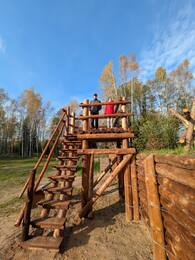
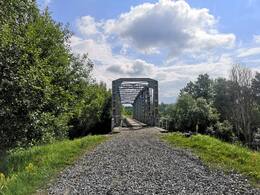
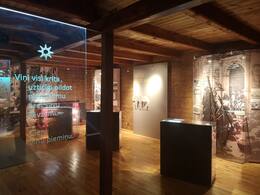
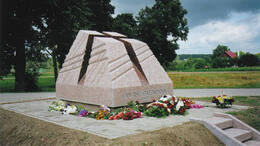
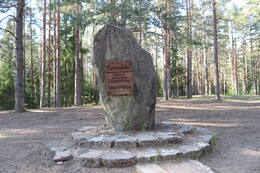
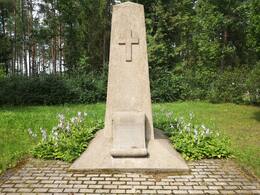
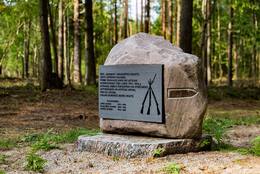

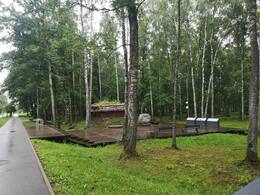
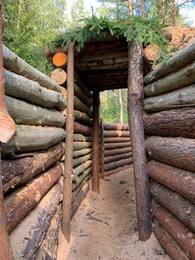
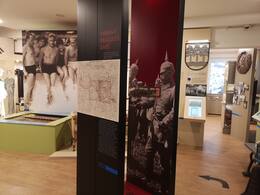
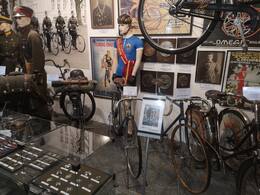
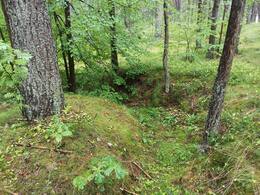
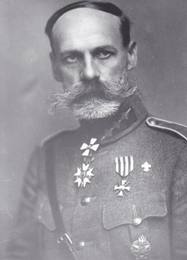
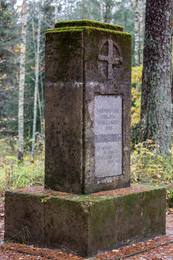
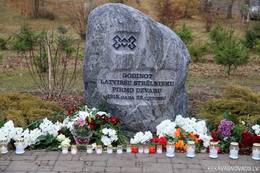

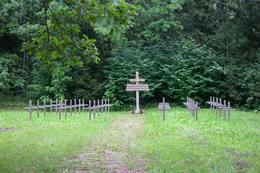
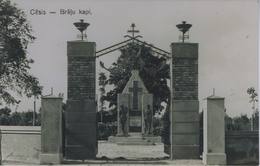
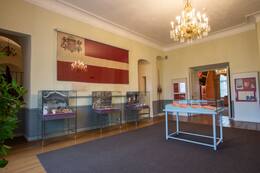
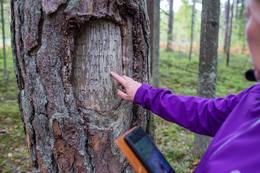

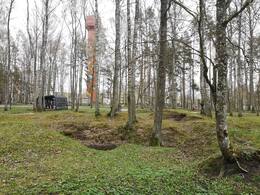

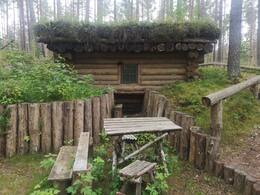
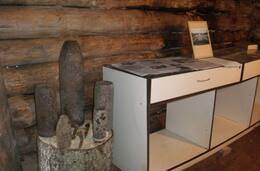
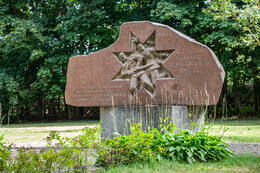
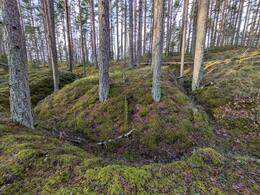

Prašau pataisyti žuvusių latvių šaulių sąrašą. Mano motinos dėdės brolis Indriķis Kadiķis, Jokabo sūnus, krito 1917 m. sausio 16 d., gimęs Snepel.